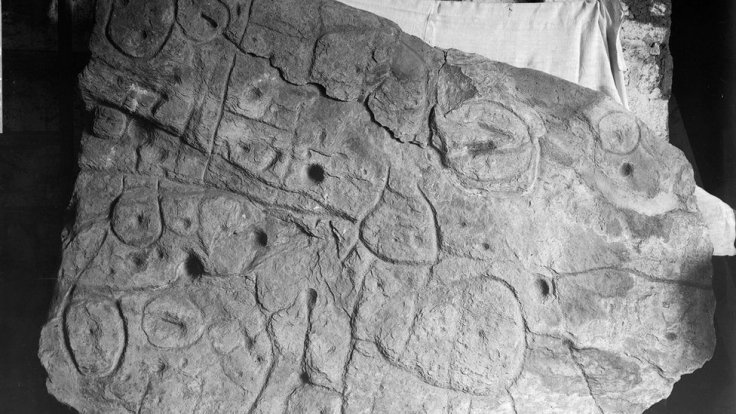Carvings found on a Bronze-age slab, which was discovered in 1900 in western France, is believed to be the oldest map in Europe. The revelation was made in a study published in the Bulletin of the French Prehistoric Society, this week.
The slab measuring 2m by 1.5m slab (5ft by 6.5ft) carries the three-dimensional map in Europe, according to the researchers. The slab, initially uncovered in 1900, was found later in a cellar in a castle in France in 2014.

Markings Indicate Map of Area Located in Western Brittany
The slab, termed Saint-Bélec Slab, is 4000-year-old and is from the period between 1900 BC and 1650 BC.
According to BBC, the slab was first found during digging of a prehistoric burial ground in Finistère, western Brittany, by local archaeologist Paul du Chatellier. It was later found stored under a moat at Mr du Chatellier's home, the Château de Kernuz.
The archaeologists who studied the engraved patterns on the rock believe that it shows the map of an area located in western Brittany.
Suggesting that the marks and engravings on the ancient slab is indication of a map, the researchers in the paper stated that the "presence of repeated motifs joined by lines" on its surface suggested it depicted an area of Finistère.
The researchers say the indentations are a 3D representation of the River Odet valley, while several lines appear to depict the area's river network, reported the outlet.
Map Drawn With Repeated Motifs and Lines
Terming the slab and its markings as one the oldest map of a territory in Europe, Yvan Pailler, an archaeologist and one of the authors of the study published in the Bulletin of the French Prehistoric Society, said that the carvings are not understandable at the first sight.
"You must really take your time to start to comprehend the way the motifs are organised and structured and the way they are interlinked through lines," said the researcher.
The repeated motifs joined by lines represented a territory 30 kilometres long and 21 kilometres wide and may signify the ownership of the land by a prince or a king. "If we could decipher what these symbols mean, we would know what the map represents," Paillier said, adding, "Can we still talk about societies where writing didn't exist and of pre or protohistory when you can produce a map with a caption?"
Speaking to BBC, Dr Clément Nicolas from Bournemouth University, one of the study's authors, said that the slab bears an 80% accuracy to an area around an 18 mile-long stretch of the river. "There are several such maps carved in stone all over the world. Generally, they are just interpretations. But this is the first time a map has depicted an area on a specific scale," he said.








